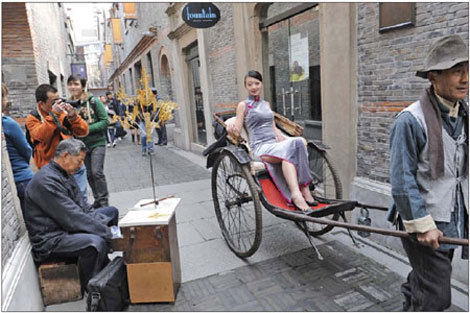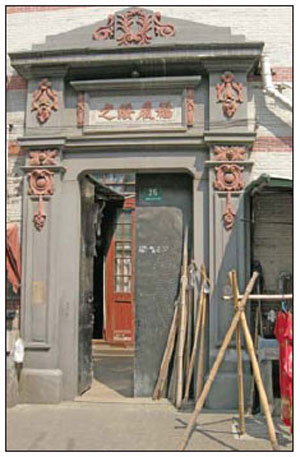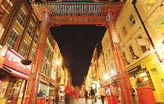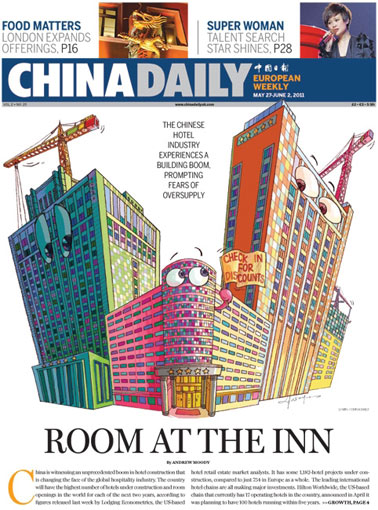Memory lanes
Updated: 2011-05-20 11:04
By Xiao Xiangyi (China Daily European Weekly)
 |
|
This longtang in Shanghai's Xintiandi area is an example of how these historic lanes have been renovated. [Guo Changyao/for China Daily] |
Shanghai’s historic ALLEYS not just unique architecture but a way of life
Most expats who re-locate to China rent apartments and many move into city comfort zones inhabited by the international community. Not Olivier and Isabelle Chouvet. The French couple has transformed a worn-out, 86-year-old villa into the house of their dreams. Their home is located in one of Shanghai's longtang, or laneways, in the western part of the city's Old French Concession and they feel they are living somewhere special. For them, their longtang house is not just bricks and mortar, it is a lifestyle.
"Since we've decided to live in China, it's best to live with Chinese people," says Oliver.
"We don't like living in the expatriate community so the Chinese environment and community in longtang is a good choice.
"We are living with something unusual and historical, where there is a kind of feeling of keeping the origin of the city."
The typical Shanghai longtang was built during the colonial period and features a unique mix of Chinese and Western architecture.
Influential writer Wang Anyi depicted the typical longtang in her award-winning novel Song of Everlasting Sorrow.
"Looking down upon from the highest point in the city, Shanghai's longtang - her vast neighborhoods inside enclosed alleys - are a magnificent sight," Wang writes.
Inside the longtang is a type of tenement housing unique to Shanghai called shikumen, which originated in the late 19th century and early 20th century.
Shikumen is characterized by the stone-framed front gate, and usually has two or three storeys, with the front yard protected by a high brick wall.
Shikumen houses were designed to be small homes for single migrants and small families, and over the decades became an iconic and unique dwelling for the Shanghainese.
"Compared with Beijing's siheyuan (courtyard homes), which are also seen in other places in North China, shikumen are much more rare for they only appear in Shanghai," says Zhang Xuemin, a researcher at National Research Center of Historic Cities.
Unlike the large amount of hutong, which are being demolished in Beijing, Shanghai's longtang are experiencing new life, thanks to the several conservation programs that the Shanghai government.
"The first successful program is in Bugaoli. It reserves the residential function of longtang, but simultaneously improves the living conditions and facilities," says Zhang.
Igor Cersosimo, an Italian who came to China to study urban development, is always surprised and delighted by his longtang experiences.
 |
|
Shikumen houses have a stone-framed gate with ornate decorations. Xu Hede / forR China Daily |
"Everything new, everything old, and everything changing quickly. I love the way they are mixed together."
The Tianzifang area is another example of how an old longtang was given a modern injection. The shopping strip now has a fusion of history and creativity and sparkling inspirations are seen in every bar, caf, craft shop or gallery.
One of the cafs in Tianzifang has set up several water features, which use old stone mills that were once used to crush wheat.
"I am trying save the stone mills' cultural value because they are almost disappearing. This is what creativity is all about," says Yang Lin, owner of the caf.
Shanghai-born Yang left his home city for work, but upon his return he discovered a special connection with longtang.
"Three years ago when I came back to Shanghai I stood still here for a long time, and a complicated feeling overwhelmed me," he says.
"Everything around me - the sound, the language, the smell - was so familiar. Tears came to my eyes, for these sensations embodied a life that I recognized: my childhood in longtang," says Yang.
"The transformation within each house in Tianzifang is a good attempt. It does not change the look and layout of the entire longtang, which is refreshing and new art has come into life."
Xintiandi, a car-free shopping and entertainment district, has also experienced renewal, but the commercial change has also caused much debate.
"All the former residents in this place were displaced. Stone gates are still there, but the longtang way of life is gone forever," says Zhang,
"But it sure is a commercial success, which sets a good example in the unique architecture's inheritance."
Chouvet believes Shanghai's traditional architecture is fortunate.
"Compared to other cities in China, the protection of the historical buildings has been much better in Shanghai," he says.
"Large areas with old houses are nicely preserved and for tourists. It's a real attraction and I hope it's going to continue."
Despite efforts to protect the longtang, some parts of the traditional longtang lifestyle are fading. One scene disappearing is the sight of seniors enjoying tea from a tiger stove.
A tiger stove, or laohuzao, is a traditional store, which sells hot water for residents and also serves as a teahouse and bathhouse in eastern China.
It dates back to a time when wood and coal were the only available fuel sources.
The stove has windows on its chamber shaped like the eyes of a tiger and the chimney is reminiscent of a tail.
Very few laohuzao stores remain in the city as gas and electrical stoves become more common, according to local media.
In fact, even some longtang are under threat.
"The total number of longtang is gradually decreasing," says Zheng Zu'an, a researcher at Shanghai Academy of Social Sciences.
"It is a paradox in some ways. The citizens of Shanghai are rejoicing over the city's international modern substance, and simultaneously, their nostalgia for the city's past is also rising."
Chouvet says Chinese cities can change without losing their historical character.
"The city is evolving and what I respect is keeping the kind of neighborhood and life environment that has always been part of the city," he says.
"You don't have to stay in the old-style museum with all facilities."
Zhang, from the National Research Center, says there is a certain sadness for some local people.
"What Shanghainese lament, when seeing the decay of Shanghai's longtang, is not so much its unique architecture but the Shanghai lifestyle that these houses made possible," he says.
Wang Anyi wrote in her novel that the longtang brought people together.
"You could say a longtang is a certain type of architecture, but what it actually is, a way of life."
E-paper

Tapping into the future
Foreign companies are investing in China's water industry as many predict a growing profit margin.
Headhunters ride on growth
Commercial property rides wave
Learning from the past
Specials

Cuisine central
London's Chinatown is helping diners appreciate full palate of Chinese food

Tying the knot
Danish couple's high-end macrame export business takes off in the mountains of Yunnan.

Truly a super woman
Li Yuchun first came to prominence in 2005 as the Super Girl winner, and since then has become an international star.
